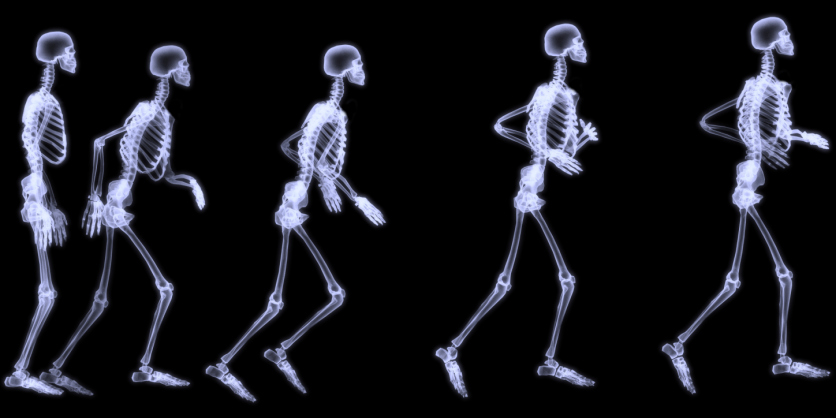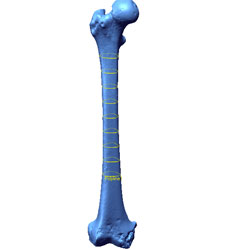Running Can Improve Bone Density in Children

Obesity as a whole, but particularly the dangers of childhood and teenage obesity are garnering a lot of attention in the health world. This is partly because of the visibility of obesity in the general population. Results from the Iowa Bone Development Study show that the invisible repercussions of physical inactivity need some time in the limelight as well.
The growth of muscle in response to exercise is common knowledge, but the fact that bone is also a living tissue that is strengthened through weight-bearing exercise is often overlooked. Weight-bearing does not necessarily mean holding weights either – walking and running are weight-bearing activities, as participants carry their own body weight. Swimming is an example of an activity that is not weight-bearing.
 Adolescence is a crucial period of bone-development and building strong bones requires exercise. The Iowa Study found that children who were very active between the ages of five to nine had significantly stronger bones than their counterparts who were less active. By age 17, however, girls were observed to be approximately 75 per cent less active than they were at age five, meaning that they were losing out on bone-building time. Though teenage boys as a whole were more active than the girls, they too did not meet the recommended levels of activity.
Adolescence is a crucial period of bone-development and building strong bones requires exercise. The Iowa Study found that children who were very active between the ages of five to nine had significantly stronger bones than their counterparts who were less active. By age 17, however, girls were observed to be approximately 75 per cent less active than they were at age five, meaning that they were losing out on bone-building time. Though teenage boys as a whole were more active than the girls, they too did not meet the recommended levels of activity.
Failure to develop bone density at a young age puts individuals at a significantly higher risk of osteoporosis, a disease characterized by deterioration of bone tissue. According to Osteoporosis Canada, fractures that are a result of osteoporosis are more common than heart attacks, strokes and breast cancer combined.
Check out Canadian Running’s advice on getting kids involved in running here.


